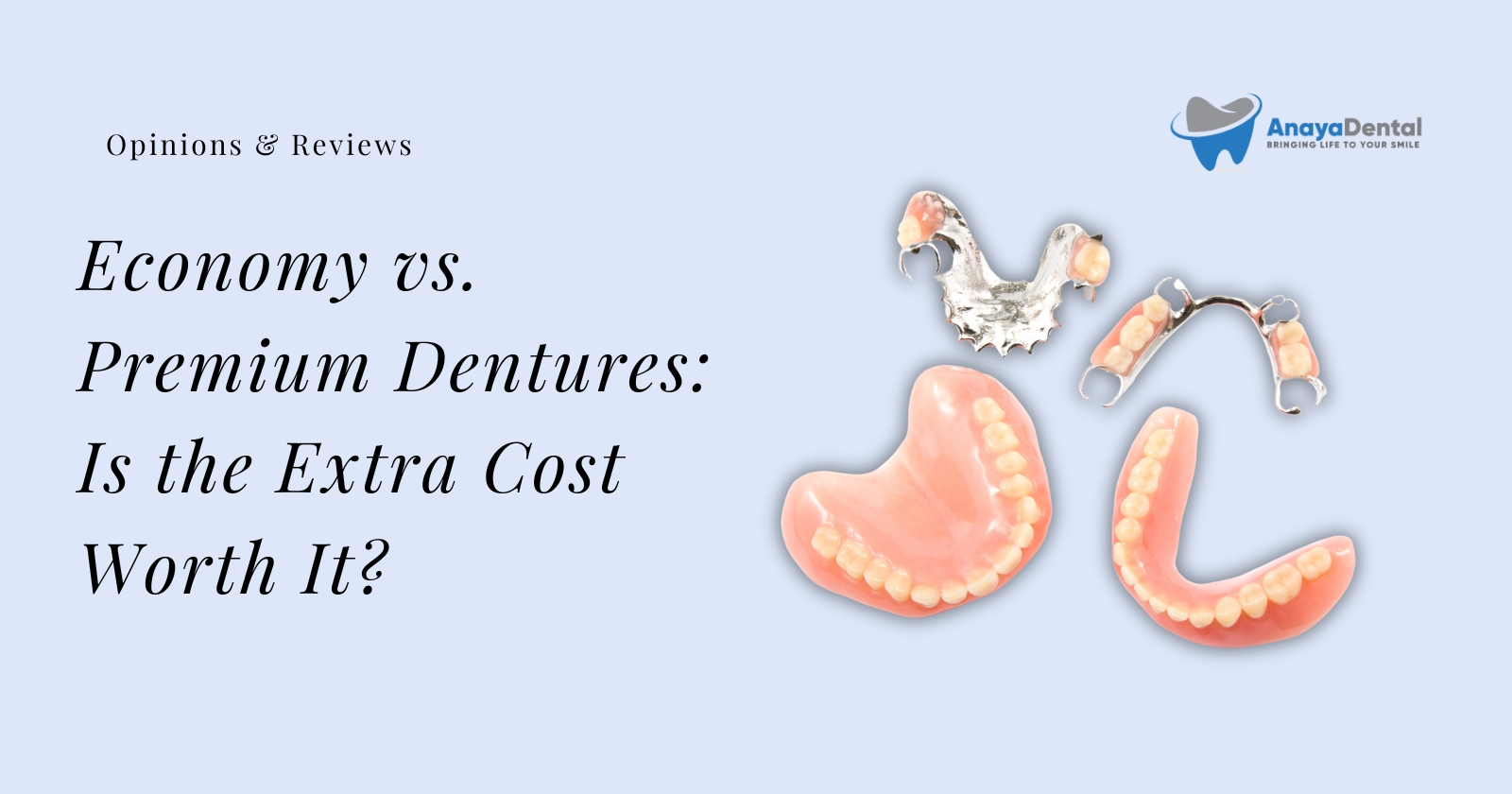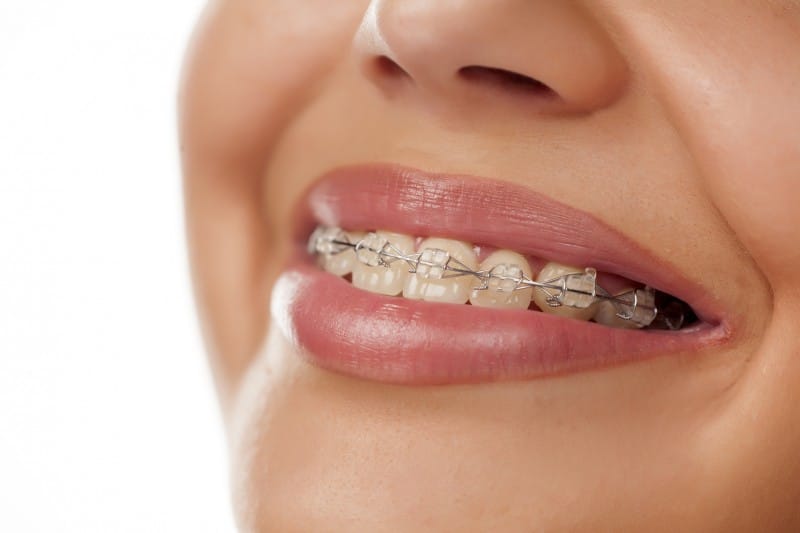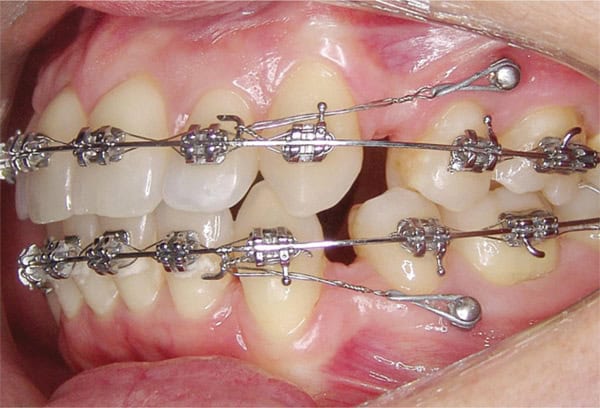Braces, champions of transforming crooked smiles into rows of pearly whites! You endured the tightening appointments, bracket adjustments, and perhaps a few colorful rubber bands. You’ve just completed your braces journey and are thrilled with your new, straighter smile! But wait, on closer inspection, you notice some unexpected gaps between your teeth. Don’t panic! This is actually quite common after braces treatment. Let’s explore the reasons why gaps might appear and what you can do to achieve the perfect gap-free smile you deserve.
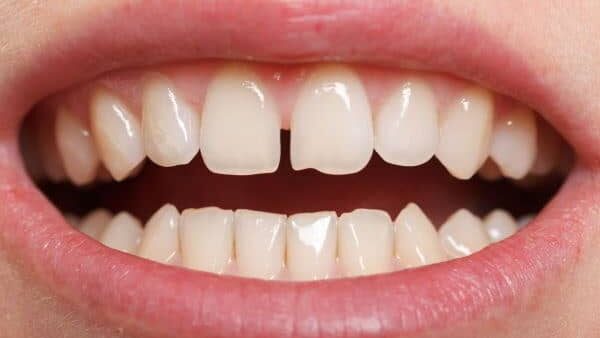
How do braces and aligners work?
Both braces and aligners aim to achieve the same goal: a straighter, healthier smile. However, they use different methods:
Braces
Braces are a collaborative effort involving metal or ceramic brackets bonded to each tooth, and a thin metal wire, called the archwire, that threads through these brackets applying gentle pressure.
Try Our Dental Calculators
Tiny elastic bands (ligatures) hold the wire in place. As the orthodontist tightens the archwire during appointments, it exerts constant pressure on your teeth.
This pressure is transmitted through the roots to the jawbone, causing the bone to resorb (break down) on one side and rebuild on the other, gradually shifting your teeth into their desired positions.
Aligners
Aligners are clear, custom-made trays that snugly fit over your teeth. Each aligner in the series is slightly different, applying gentle, controlled pressure to shift your teeth incrementally.
Unlike braces, which apply constant pressure, aligners work through a series of small adjustments. You wear each aligner for a specific period (usually 1-2 weeks) before moving to the next one in the series. This gradual progression guides your teeth toward their final positions.
Retention
Once your teeth have reached their final positions, wearing a retainer as directed by your orthodontist is crucial. This helps maintain the new bone formation and prevents your teeth from shifting back.
Is it normal to have gaps in front teeth after braces?
Yes, having gaps between your front teeth after braces, also known as diastema, is quite normal. It can be surprising after all your effort with braces, but there are a few reasons why it might happen:
- Retainer: The most common cause is inadequate retainer use. Retainers are crucial for keeping your teeth in their new positions. If not worn as instructed, your teeth can start shifting back, potentially creating gaps.
- Bone Remodeling: During orthodontic treatment, the bone around your teeth undergoes remodeling—breaking down to allow tooth movement and rebuilding to hold them in place. Sometimes, this resorption can happen unevenly, leaving small gaps.
- Underlying Anatomy: Sometimes, the size or shape of your jawbone may not perfectly accommodate all your teeth when straightened, leading to gaps despite braces.

Consequences of gaps between the teeth
Gaps between teeth can have both functional and cosmetic consequences:
- Oral Health Concerns: Spaces between teeth can trap food particles and plaque, making them hard to remove with regular brushing and flossing, potentially increasing the risk of cavities and gum disease. Uncleaned plaque can also irritate the gums, leading to inflammation and possibly gum disease.
- Speech Difficulties: Large gaps, especially between the front teeth, can affect speech patterns, causing a lisp or whistling sounds.
- Cosmetic Concerns: Many people find gaps between their teeth unattractive and may feel self-conscious about their smile, affecting their confidence and social interactions.
If you notice gaps after your braces, consult our orthodontist Dr. Jyoti Verma promptly. She will assess the cause of the gaps and recommend the best course of action, which may include additional orthodontic treatment like clear aligners or adjustments to your current braces, or even cosmetic dentistry options like bonding or veneers.
How to prevent gaps after braces?
Preventing gaps after braces involves maintaining the hard-earned results of your orthodontic treatment. Here are some key strategies to help keep your smile perfectly aligned:
- Retainer Commitment: Wearing your retainer as directed by your orthodontist is crucial. Retainers are essential for holding your teeth in their new positions after the braces have moved them. Adhering to your orthodontist’s instructions for retainer wear, especially during the initial period, is vital to prevent teeth from drifting back and creating gaps.
- Oral Hygiene Maintenance: Good oral hygiene is essential not only for a sparkling smile but also for preventing gaps. Brushing twice a day and flossing daily helps remove plaque and bacteria that can contribute to gum issues. Healthy gums provide better support for your teeth, reducing the risk of shifting and gaps.
- Regular Dental Checkups: Maintain regular visits to your orthodontist after your braces are removed. These checkups allow your orthodontist to monitor your progress and address any minor tooth movements before they develop into significant gaps.
- Mindful Eating: While you might be excited to eat without restrictions after braces, it’s important to be mindful of consuming hard or sticky foods that could damage your retainers or stress your teeth, potentially causing unwanted movements.
- Manage Bad Habits: Be aware of any unconscious habits such as clenching or grinding your teeth, as these can put undue pressure on your teeth and contribute to shifting. Consider relaxation techniques or discuss the possibility of a protective mouthguard with your orthodontist if necessary.
- Open Communication: If you have any concerns about gaps or the fit of your retainer, don’t hesitate to discuss them with your orthodontist. They are there to help you maintain your results and ensure your smile stays gap-free.
By prioritizing these practices, especially consistent retainer wear, you can significantly reduce the risk of gaps forming after your braces treatment and enjoy a beautifully aligned smile for years to come.

When Do Your Teeth Stop Shifting After Braces?
Unfortunately, your teeth never truly stop shifting after braces. This might seem discouraging after all your hard work, but there’s good news! Here’s what to expect:
Natural Tendencies: Throughout our lives, our teeth naturally experience gentle forces from talking, chewing, and even unconscious habits like clenching our jaws. These forces can cause slight movements over time, even after braces.
Retainer’s Role: This is why retainers are crucial. They act like loyal sentries, holding your teeth in their new positions after braces have done the hard work of moving them. Consistent retainer wear, especially during the initial period after braces are removed, helps counteract these natural tendencies and minimizes shifting.
Settling Period:
- Initial Months: In the months immediately following braces removal, there can be some minor shifting as your teeth adjust to their new positions and the surrounding bone settles. This is why regular checkups with your orthodontist are important during this time.
- Years of Stability: With consistent retainer wear, your teeth should become increasingly stable over a period of years. The jawbone hardens and adjusts to the new positions of your teeth, reducing the likelihood of significant movement.
Retainer Importance: Even after years of stability, retainers are still important for long-term results. Most orthodontists recommend wearing retainers at least part-time, often nightly, for life. This helps maintain your beautiful smile and prevent your teeth from gradually shifting back toward their original positions.
Will a Retainer Close a Gap After Braces?
Yes, in most cases, retainers are designed to hold your teeth in place after braces have moved them, not actively close gaps. However, there are some situations where retainers might play a role in gap closure:
- Very Minor Gaps: If you have a very small gap that appears after braces, especially due to inconsistent retainer wear initially, a retainer may be able to nudge your teeth slightly closer together as your jawbone settles. Your orthodontist will determine if your retainer can address this.
- Retainer Adjustments: Sometimes, minor adjustments to your existing retainer can be made to create a more snug fit and apply gentle pressure to help close small gaps.
Why Retainers Aren’t the Primary Solution for Gaps?
- Limited Pressure: Retainers are designed to maintain your teeth’s position, not apply strong forces for movement. Braces use a system of brackets, wires, and adjustments to exert controlled pressure and move teeth over time. Retainers typically don’t have that capability.
- Gap Size: For larger gaps that appear after braces, a retainer won’t be enough to effectively close them. These gaps might require additional orthodontic treatment.
How to fix gap in front teeth after braces?
To fix a gap in your front teeth after braces treatment, the appropriate approach will depend on the severity and cause of the gap. Here’s how you can address this issue:
- Consult Your Orthodontist: Start by visiting your orthodontist. They can examine your teeth, identify why the gap has formed, and suggest the most effective treatment tailored to your situation.
- Treatment Options:
- Minor Gaps and Retainer Adjustments:
- If the gap is small and likely resulted from not wearing your retainer consistently, your orthodontist might adjust your existing retainer to fit more snugly.
- They may also recommend more regular retainer use, particularly at night.
- Minor to Moderate Gaps – Additional Orthodontics:
- For more noticeable gaps that retainer adjustments can’t fix, you might need more orthodontic treatment.
- Continued Braces Treatment: Sometimes, additional time with braces is necessary to close the gaps.
- Clear Aligners: Products like Invisalign are effective for closing minor to moderate gaps. They involve using a series of custom-made, nearly invisible aligners that gradually move your teeth into place.
- Very Small Gaps – Cosmetic Dentistry:
- For minimal gaps, cosmetic dental procedures are another solution.
- Dental Bonding: A tooth-colored resin is applied to close the gap, providing a uniform look.
- Veneers: Custom-made thin porcelain shells that cover the fronts of your teeth can also effectively close small gaps and enhance your smile’s appearance.
- Minor Gaps and Retainer Adjustments:
- Closing Teeth Gaps Without Braces:
- Minor Gaps:
- Retainer Adjustments: If the gap is minimal, adjusting your retainer for a tighter fit or increased wear might close it.
- Cosmetic Dentistry:
- Dental Bonding: This quick procedure applies resin to the teeth, filling in small gaps seamlessly.
- Veneers: These porcelain shells are great for aesthetically closing gaps and enhancing the overall smile.
- Moderate Gaps:
- Clear Aligners: This is a popular choice for their effectiveness and discreet appearance in closing gaps of moderate size.
- Minor Gaps:
- Important Considerations:
- Severity of Gap: Larger gaps or those due to underlying anatomical issues might require more intensive orthodontic treatment beyond cosmetic solutions.
| Gap Size | Treatment Options |
| Very Small | Retainer Adjustments, Dental Bonding, Veneers |
| Minor to Moderate | Clear Aligners |
| Large or Caused by Underlying Anatomy | Braces or Clear Aligners (might require a more complex treatment plan) |
Triangle gaps between teeth after braces
The triangular gaps between your teeth after braces, known as open gingival embrasures, are a common concern but don’t necessarily indicate unsuccessful braces treatment. Here’s what you need to know:
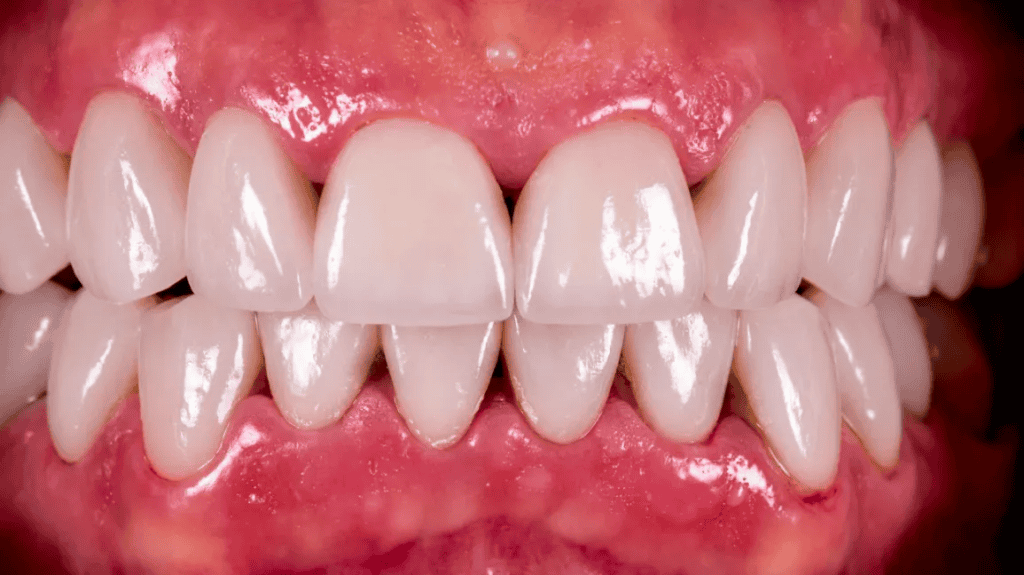
Causes of Triangular Gaps
- Pre-existing Condition: Often, these gaps are not caused by braces. They may have been present before due to the natural shape of your teeth and become more noticeable once your teeth are aligned.
- Gum Recession: This more concerning cause can lead to gaps as the gum tissue recedes. Possible reasons include:
- Periodontal Disease: This infection can damage the gums and bone, leading to recession.
- Aggressive Brushing: Brushing too hard can wear down the gums over time.
- Genetics: Some people are naturally more prone to thin gum tissue.
Treatment Options
- No Treatment Needed: If the gaps are small and don’t cause functional issues or sensitivity, your dentist might recommend just monitoring them.
- Improved Oral Hygiene: Careful brushing and flossing can help prevent further gum recession and maintain gum health.
- Gum Grafting: For significant gum recession, a periodontist can perform gum grafting to restore lost gum tissue and cover exposed root surfaces.
- Cosmetic Dentistry: For small gaps that are mainly aesthetic issues:
- Dental Bonding: A tooth-colored resin can be applied to fill the gaps and smooth out the appearance.
- Veneers: Custom-made thin porcelain shells can be placed over the fronts of your teeth to close the gaps and enhance your smile.
Schedule a consultation with your dentist to discuss the triangular gaps. They can assess your teeth, determine the cause of the gaps, and suggest the most suitable treatment plan. Addressing these gaps early, especially if due to gum recession, is important for maintaining your oral health and ensuring a beautiful smile.



